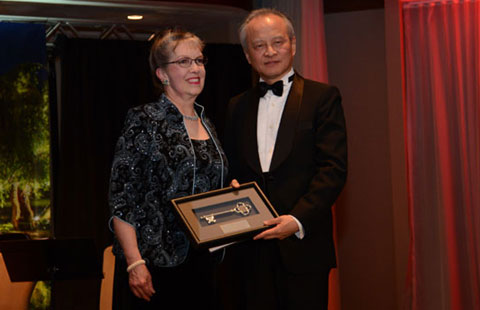New model to boost South-South ties
Updated: 2014-07-30 08:57
By Gina Caballero(China Daily)
|
|||||||||
Moreover, this is the first attempt by the region's countries to address China's Policy Paper on Latin America and the Caribbean issued in November 2008. This is very important from Latin American perspective, because it is the first time the region as a whole has defined the nature and priorities of its engagement with China. Therefore, acknowledging their growing dialogue and South-South cooperation, China and the region announced the "creation of a global partnership of equality, mutual benefit and joint development ... in order to increase the level of cooperation in a diverse range of areas".
Consequently, they established the China-CELAC Forum (CELAC stands for the Community of Latin American and Caribbean States), which will be convened in Beijing early next year. The China-CELAC Forum is indeed a historic step in the relationship and a milestone in the design of a new cooperation architecture that builds synergies among the prioritized agenda items the two sides have identified to move their new partnership forward. Among these, their cooperation in infrastructure development will be vital for forging more diversified and balanced economic relations.
This cooperation could be especially fruitful given the capabilities of Chinese companies and banks in this sector, along with their readiness to step up their ongoing global operations, and the enormous deficit in infrastructure in Latin America that calls for efficient intervention to integrate multi-modal transport links across the region.
In this regard, the cooperation agreement signed during Xi's visit to Brazil on railway projects, which includes the feasibility to develop a transcontinental railway between Brazil and Peru, is a sign of the positive developments that lie ahead.
Despite the huge potential for cooperation in infrastructure, it is not, however, a straight march.
As some Chinese infrastructure building companies have been learning in their attempt to make inroads into the region, access is governed by procedures they are not familiar with. So, to make their participation more effective, they could consider entering into partnerships with local players which can guide them to success - for example, public bidding and structuring public-private partnerships can win vital projects. Besides, by working with local partners, Chinese companies could strengthen their capacities while innovating new forms of funding.
Multi-sector partnerships in infrastructure will bridge the geographical distance between China and the region. In addition, they could be a great source of ideas for establishing the forms and formats that would help build a new South-South cooperation architecture that fits their developmental needs and aspirations. Doing so will only enhance the capabilities China and the region have as development partners.
As recognized in the joint declaration, it is this condition that will enable the two sides to get developing countries greater say in the world order. Their cooperation, therefore, will not only continue to increase the South's share in the global economy, but also make international cooperation more efficient.
The author is China consultant of CAF Development Bank of Latin America and adviser on China relations to the UN Economic Commission for Latin America and the Caribbean.

 Music at her fingers
Music at her fingers
 Across America Over the Week (Jan 16 - Jan 22)
Across America Over the Week (Jan 16 - Jan 22)
 Spend Chinese New Year in style
Spend Chinese New Year in style
 Ili river valley becomes a popular destination for swans
Ili river valley becomes a popular destination for swans
 Philip Ma: from scientist to businessman
Philip Ma: from scientist to businessman
 Birmingham's Spotlight on China dinner
Birmingham's Spotlight on China dinner
 How to distinguish doucai, wucai, Famille-rose and enamel porcelain
How to distinguish doucai, wucai, Famille-rose and enamel porcelain
 Xinjiang lake in bumper fishing season
Xinjiang lake in bumper fishing season
Most Viewed
Editor's Picks

|

|

|

|

|

|
Today's Top News
Houston's SW Chinatown
China to focus on reforms, opening of capital market
Slowdown brings new risks to banks
Trade group calls for BIT
Market status for China is 'political' issue
Birmingham's Spotlight on China dinner
Bank takes renminbi-clearing seriously
Traditional Garb
US Weekly

|

|








